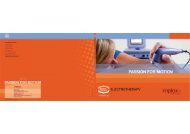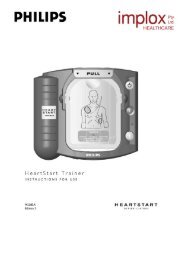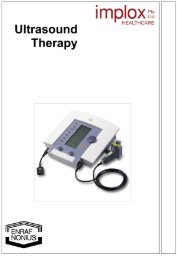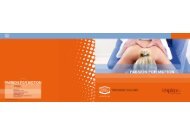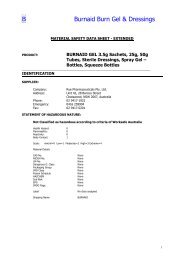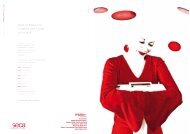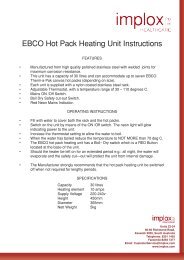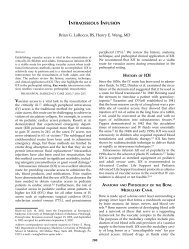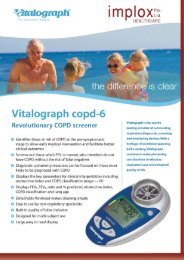Directions for Use - Implox
Directions for Use - Implox
Directions for Use - Implox
Create successful ePaper yourself
Turn your PDF publications into a flip-book with our unique Google optimized e-Paper software.
E-5<br />
category<br />
specifications<br />
function<br />
Evaluates impedance of adhesive pads <strong>for</strong> proper contact with the patient’s skin,<br />
and evaluates the ECG rhythm and signal quality to determine if a shock is<br />
appropriate.<br />
shockable rhythms<br />
Ventricular fibrillation (VF) and some ventricular tachycardias associated with a<br />
lack of circulation, including ventricular flutter and polymorphic ventricular<br />
tachycardia (VT). The HeartStart uses multiple parameters to determine if a<br />
rhythm is shockable.<br />
NOTE: For patient safety reasons, some very low-amplitude or low-frequency rhythms<br />
may not be interpreted as shockable VF rhythms. Also, some VT rhythms usually<br />
associated with circulation will not be interpreted as shockable rhythms.<br />
non-shockable rhythms<br />
SMART Analysis is designed to detect non-shockable rhythms as defined by<br />
AHA/AAMI DF-80. See following table. On detection of any non-shockable<br />
rhythm, the HeartStart prompts user to per<strong>for</strong>m CPR if needed.<br />
pacemaker detection<br />
Pacemaker artifact is removed from the signal <strong>for</strong> rhythm analysis.<br />
Laerdal Medical<br />
artifact detection<br />
analysis protocol<br />
If electrical “noise” (artifact) is detected which interferes with accurate rhythm<br />
analysis, analysis will be delayed until the ECG signal is clean.<br />
Depending on results of analysis, either prepares <strong>for</strong> shock delivery or provides<br />
a pause. For details of protocol, see Appendix F, “Configuration.”<br />
E



